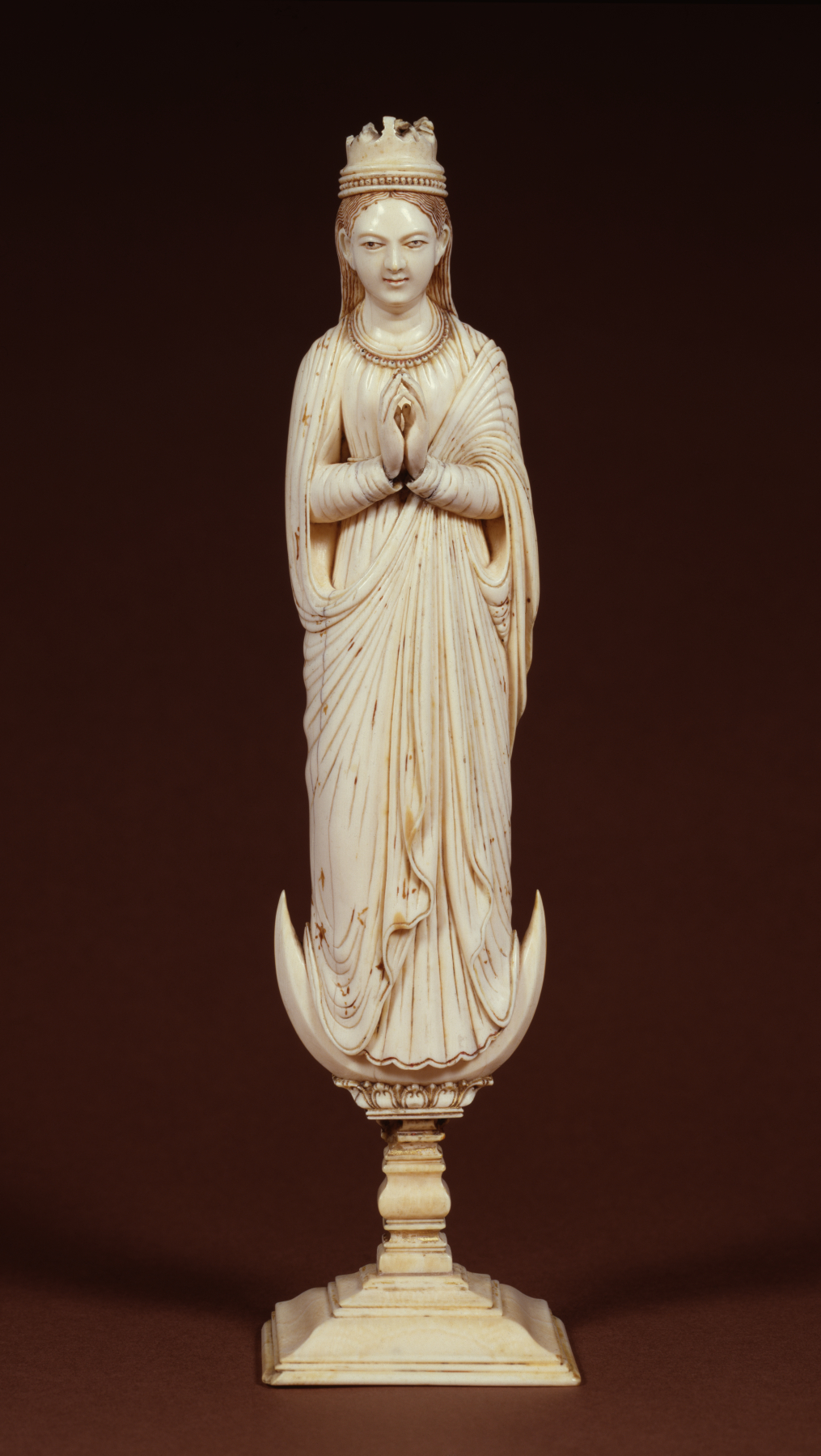Virgin of the Immaculate Conception
The Virgin's mantle falls in the elegant, linear folds of Indian sculpture. The native style and facial features are smoothly adapted to the Christian apocalyptic iconography of the Virgin, who is represented standing on a crescent moon. With little reference to the body beneath the robes, her physical energy is directed into the peace and serenity of prayer. Native and European vocabularies are in dialogue. Christianity came with the Portuguese in 1505. Known to Europeans in the 17th century as Ceylon, the island became officially known as Sri Lanka in 1972.
Provenance
Provenance (from the French provenir, 'to come from/forth') is the chronology of the ownership, custody, or location of a historical object. Learn more about provenance at the Walters.
Don Marcello Massarenti Collection, Rome [1897 catalogue vol. II: no. 478 as a Florentine work of the 15th century]; Henry Walters, Baltimore, 1902, by purchase; Walters Art Museum, 1931, by bequest.
Geographies
Sri Lanka (Ceylon) (Place of Origin)
Measurements
H: 10 1/8 in. (25.7 cm)
Credit Line
Acquired by Henry Walters with the Massarenti Collection, 1902
Location in Museum
Accession Number
In libraries, galleries, museums, and archives, an accession number is a unique identifier assigned to each object in the collection.
In libraries, galleries, museums, and archives, an accession number is a unique identifier assigned to each object in the collection.
71.341




